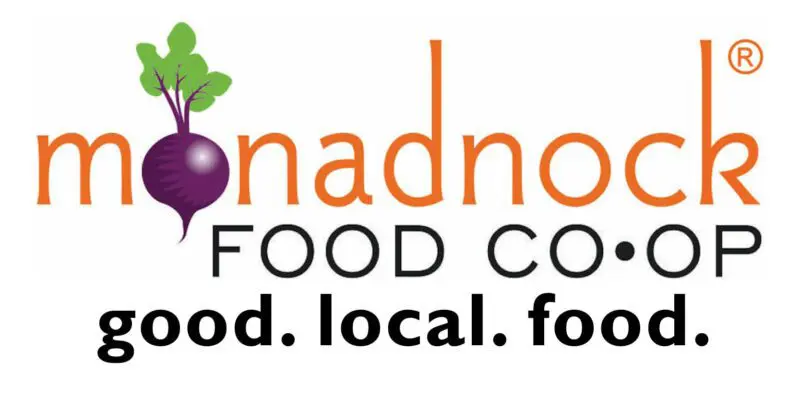
A truck from Washington, NH dumps a load of glass, plastic and aluminum to be recycled.
I wasn’t sure what to expect when I arrived with three fellow Green Team members at the Keene Recycling Center, Rt 12N, which has a stunning view of Mount Monadnock (who knew?!). When I asked for a tour, I was hoping we would glean a new perspective on the ins and outs of the recycling industry. Why does the Keene Recycling Center accept only plastics #1 and #2? Where do all the raw materials go? Are the staff passionate about reducing our impact on the environment?
Happily, our tour with Mike Hartness, Recycling Operations Foreman did not disappoint. He thoroughly answered our endless questions. As we started our tour, Mike explained to us that the entire facility had once been completely contained within the small metal barn that sits up on the hill. Mike explained (yelling over the noise of trucks dumping huge loads of recyclables) that Keene processes more materials than even the Manchester, NH facility—which has a much larger population. Keene’s facility processes materials from many local towns, even some in Vermont.

Baled plastics, ready to be shipped out of the facility.
The facility is a dual-stream recycling center, which means materials like plastic and glass must be separated from paper and cardboard. An assembly line of employees sort plastic, glass and aluminum by hand; materials are then compacted and baled using one of the largest balers in the State. Just one, seemingly small, bale of #1 plastics weighs between 800 and 1,000 pounds. These plastics could have a variety of destinations: from becoming a Patagonia jacket to a milk jug. Transparent plastics (like milk jugs) fetch a higher price on the market; when colored plastics are processed they must be re-dyed as all the colors blend together during the melting process.
I was surprised to learn that the Keene Recycling Center is self-funded; it receives no tax money or funds from the State. While Mike understands the obvious environmental benefits that can come from recycling, he also has a deep understanding of the business aspect of recycling as well. He likened the environment for recyclables to that of the stock market—highly volatile; and the recycling market is completely dependent upon the price of oil. When a plant in Connecticut closed, Mike was no longer able to accept plastics #3 – #7 as it would cost the facility 4 to 5 times the worth of the materials to truck them to the next closest facility.

Mike Hartness & the Green Team with baled plastics.
While Mike can’t control the recycling market, he has used ingenuity and creativity to re-purpose items for which there is no market, enabling many materials stay in our region, either for processing or use. For example, there is currently no market for brown and green glass, so the facility grinds the glass back into sand and the Public Works Department uses it for projects around town. Wood is sent to Hopkinton where it is reused for new projects, to Canada to be made into particle board (for companies like Ikea) or, if it is not of high quality, it’s ground for landfill cover and sent to Rochester. Electronics are all sent to Portsmouth, NH. Mike’s innovation and commitment to reducing our impact on the environment—one way or another—was inspiring.

Glass which will be ground back into sand.
And while it was great to see so much material being recycled, I couldn’t help but think about the sheer volume of materials going through the facility, and how much energy is required to turn the materials into new products. It validated an idea we’re always working on throughout our co-op: how can we reduce overall consumption? Packaging? Single-use products? Recycling is a great way to add another step in a products useful life, but we still have a long way to go in figuring out how to simply consume fewer resources and use less stuff overall.
That’s something the Green Team discussed on our way home. It’s why we love our co-op’s bulk department so much—it allows us to do a considerable amount of packaging-free shopping. The same is true at our beverage bar with our coffees and smoothies. We even offer a discount on coffee for bringing your own mug! And if you forget those reusable shopping bags in your car, run back out and get them—we’ll wait!

Mike Hartness explaining how bottles with liquid inside can’t be recycled because the liquid could damage the electrical equipment required in the next step, crushing and baling.


